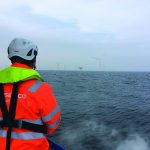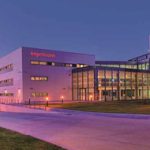Wind turbines are set to become even bigger and better in an effort to maintain consistent downward trends of Levelized Cost of Electricity (LCOE), according to new research by Wood Mackenzie Power & Renewables.
“Rapid technology developments have been a large driver of elevating wind to a competitive source of power generation globally,” said lead author and senior analyst Shashi Barla.
The latest edition of the Global Wind Turbine Technology Trends report forecasts rapid innovations up until 2027. These innovations are reducing LCOE on the latest turbines, while at the same time improving performance and reliability.
“Now that auction systems are driving down power prices worldwide, product and service evolution is paramount,” Barla said. “While the shift away from generous incentive mechanisms leads to a short-term market dip, the forecasted growth over the next decade makes the market ripe for innovation.”
To withstand the increasing price pressure associated with a stream of headlines heralding plummeting power-price bids, turbine OEMs are being forced to make large investments in technology. Companies with global operations, strong financial capabilities, and relationships with leading asset owners will harness these commercial advantages to cement their leadership in critical wind markets.
“We expect the global market share of the top five turbine OEMs to rise to more than 73 percent come 2027, compared to just 54 percent in 2016,” Barla said. “Fierce competition is also leading to shorter product lifecycles, as turbine OEMs introduce new product platforms to increase efficiency and performance. Our research predicts the newest platforms will have fewer product variants delivering the same demand volume, reinforcing the evolutionary product strategy approach many turbine OEMs are pursuing.”
“The rapid pace of new product introductions will only begin to slow down post-2020,” he said. “In recent years, new products were released at an accelerated pace, with OEMs embracing an evolutionary strategy that led to the new breed of 4.X MW turbine platforms. This left a series of 3.X turbines in their wake with barely a chance to recoup their tooling costs.”
According to the research, the U.S., Latin America, and eventually smaller emerging wind markets will transition to 4.X turbines, which were previously expected to be limited to the European market, in the next two years.
The turbine ASP (Average Selling Price) per megawatt has declined by 28 percent since 2010; however, the AEP (Annual Energy production) per megawatt has increased in excess of 50 percent during the same period. As developers are showing proclivity toward merchant PPAs (Power Purchasing Agreements), turbine OEMs are working toward sub 30 euros/MWhr LCOE turbines to address this demand.
More info www.woodmac.com




































